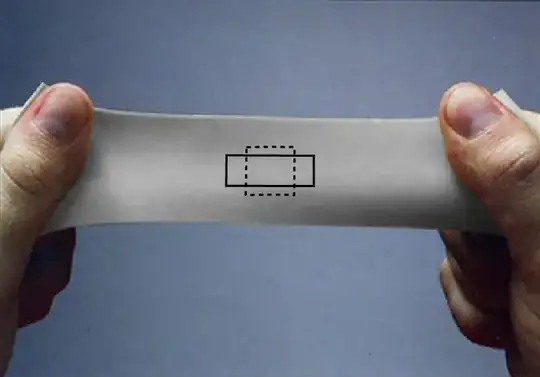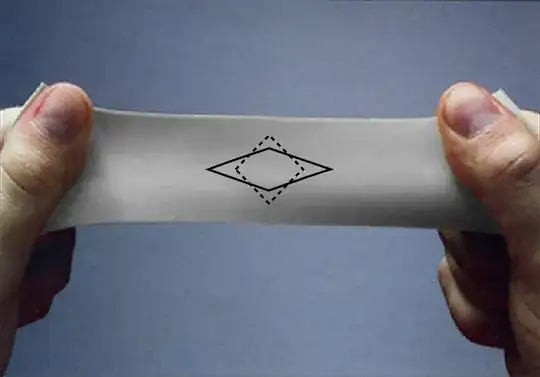If $\Delta T$ isn't constant, we can no longer use a simple strain relation that applies to the entire body, as you've anticipated.
First, a preliminary review.
Generalized Hooke's law (under the framework of linear isotropic elasticity) in any region is
$$\varepsilon_{ij}=\frac{1+\nu}{E}\sigma_{ij}-\frac{\nu}{E}(\sigma_{11}+\sigma_{22}+\sigma_{33})\delta_{ij}+\alpha\Delta T \delta_{ij},$$
where the Kronecker delta $\delta_{ij}=1$ if $i=j$ and 0 otherwise and where $E$, $\nu$, $\alpha$ and $\Delta T$ are respectively that region's Young modulus, Poisson ratio, thermal expansion coefficient, and temperature difference relative to the unstressed state.
(This is a succinct way of writing six equations for the normal and shear stresses in all three Cartesian directions:
$$\varepsilon_{11}=\frac{1}{E}\sigma_{11}-\frac{\nu}{E}\sigma_{22}-\frac{\nu}{E}\sigma_{33}+\alpha\Delta T;$$
$$\varepsilon_{22}=\frac{1}{E}\sigma_{22}-\frac{\nu}{E}\sigma_{11}-\frac{\nu}{E}\sigma_{33}+\alpha\Delta T;$$
$$\varepsilon_{33}=\frac{1}{E}\sigma_{33}-\frac{\nu}{E}\sigma_{11}-\frac{\nu}{E}\sigma_{22}+\alpha\Delta T;$$
$$\varepsilon_{12}=\frac{1+\nu}{E}\sigma_{12};$$
$$\varepsilon_{13}=\frac{1+\nu}{E}\sigma_{13};$$
$$\varepsilon_{23}=\frac{1+\nu}{E}\sigma_{23}.$$
These equations represent a material's tendency to elongate axially under axial stress and thermal expansion, to generally contract laterally under axial stress, and to shear under shear stress.)
To this we should add that axial (normal) stresses and strains can look like shear stresses and strains upon rotation of any conceptual infinitesimal element; Nature operates independently of our preferred coordinate system.
As an example, consider an axial load that appears to apply only normal stresses and strains (i.e., changes in element side lengths):


But in an equally valid rotated view, that axial load induces normal and shear stresses and strains, the shear involving a change in the element shape:

(Aspects of rotational tensor transformation are discussed in this answer.)
This aspect is important because although generalized Hooke's law above might seem to suggest that thermal expansion affects normal stresses and strains only, thermal expansion induces shear if the stress/strain isn't equitriaxial, meaning identical in all three directions.
We can now recover the simple case of a uniform temperature increase applied to an unconstrained object. With no applied loads and no internal stress, $\sigma_{11}=\sigma_{22}=\sigma_{33}=\sigma_{12}=\sigma_{13}=\sigma_{23}$, and any region expands with $\varepsilon_{11}=\varepsilon_{22}=\varepsilon_{33}=\alpha\Delta T$. No shear is involved. Interestingly, even voids expand to the same degree, since material could be inserted without stress into those voids and would expand just as anywhere else. This provides insight into the question of whether a hole in an unconstrained object would expand or contract with thermal expansion of the material around it. (It would expand.)
Unfortunately, the problem becomes much more complex if arbitrary constraints are applied (e.g., clamping of one edge) or the temperature change is nonuniform. Exact solutions are generally available only for simple cases, such as symmetric clamping or a simple temperature change with simple geometry. More generally, Hooke's law and the equations of equilibrium and compatibility must be solved numerically, for instance, through finite element analysis.
Does this all make sense?


